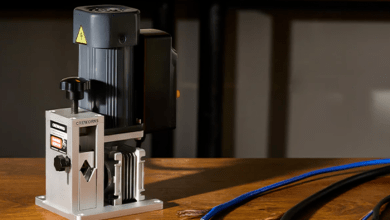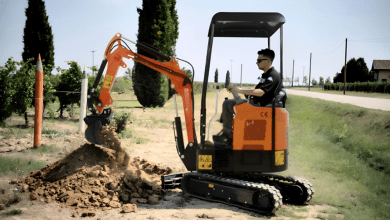
Portable dual battery systems are essential tools for adventurers who love camping, four-wheel driving, and exploring off-grid territories. These systems provide reliable power, ensuring that all electronics and appliances function smoothly, even far away from conventional power sources. Choosing the right system involves understanding essential features, from battery type and capacity to smart monitoring and safety elements. This guide highlights what to look for in a portable dual battery system, ensuring you make an informed decision. Whether it’s charging via solar panels or needing a system resilient against the harsh environments you tread, having the right features enhances your outdoor experience immensely.
Battery Type and Capacity
Lithium vs. AGM Technologies
Two predominant technologies feature in dual battery systems: Lithium and AGM. Lithium batteries, known for their lightweight and high-energy density, provide efficient long-term power, ideal for extended trips. They boast a rapid recharging capability and have a longer life span, though they may be more expensive upfront. AGM (Absorbent Glass Mat) batteries offer robustness and reliability, maintaining power even in cold temperatures. They’re often more affordable but can be heavier and less efficient over time. For adventurers needing speedy and reliable power, lithium technology is often preferred, whereas AGM provides a sturdy choice for budget-conscious outdoorsmen.
How to Choose the Right Capacity
Choosing the right battery capacity involves evaluating your power requirements against trip length and the number of devices you need to power. A simple calculation of total watt-hours needed daily can help determine the necessary capacity. Consider what you plan to plug in—a few LED lights require less power than a refrigerator. It’s crucial to account for emergencies, where additional capacity can be invaluable. Balancing upfront costs with these needs ensures a system that effectively supports your adventures without over-burdening your budget.
Power Output and Inverter Considerations
Power output refers to the total wattage a battery system can deliver. For complex electronics and appliances, systems with robust power output are imperative. Choose inverters that match your power output needs, converting DC battery power into AC effectively so you can use standard household devices. Units with pure sine wave inverters provide more consistent quality, ideal for sensitive electronics. Examine inverter efficiency to ensure your setup maintains optimal battery function while powering diverse equipment.
Port Variety and Charging Compatibility
AC, DC, and USB Port Configurations
Port variety matters when connecting multiple devices simultaneously. Ideal systems feature AC outlets for appliances, DC ports for low-power items, and USB sockets for smartphones and tablets. The right configuration depends on device types used often—more AC outlets benefit campers using standard appliances, while DC ports efficiently handle smaller electronics like fans. A blend of AC, DC, and USB ensures flexibility, reducing the need for adapters and enhancing compatibility across devices.
Fast Charging and High-Wattage Support
Fast charging capability is indispensable for dynamic outdoor activities, demanding quick turnaround times with power availability. Systems supporting rapid charging via USB-C or similar technologies can reduce downtime. High-wattage support accommodates appliances with significant power requirements, ensuring proper function without draining the battery rapidly. Look for systems where fast charging complements extended use, enhancing their reliability and convenience for prolonged outings.
Solar Compatibility and Expansion Options
Solar compatibility elevates a battery system’s utility by harnessing renewable energy effectively. Choosing units designed for solar panel integration streamlines energy collection during sunlit hours, enhancing off-grid independence. Advanced setups may offer modular designs for capacity expansion via additional battery units or solar panels. The ability to expand provides future-proof reliability, accommodating rising power demands with minimal fuss.
Durability and Portability
Weight, Size, and Handle Design
Portable dual battery systems should be lightweight yet powerful. Ideal designs balance weight considerations against required capacity, easy to carry or fit within a vehicle setup. Compact systems minimize the challenge of transportation, while the handle design enhances ergonomic comfort. Choose systems that offer portable convenience without sacrificing essential battery technology or compromising on power delivery.
Ruggedness for Outdoor Use
Outdoor adventures test equipment with challenging conditions; thus, durable systems meeting rugged standards are vital. Assessments of construction quality, such as reinforced casing and impact resistance, indicate readiness for demanding environments. Systems geared for outdoor use withstand bumps and falls without losing performance, ensuring your battery remains functional wherever your path leads.
Weather Resistance and Enclosure Quality
Reliable systems feature weather resistance against elements like rain, wind, and dust. Check enclosures for waterproofing or dustproofing indications, safeguarding internal components from environmental hazards. High enclosure quality extends system lifespan and maintains battery integrity under adverse conditions, ensuring the continuation of power supply without unnecessary interruptions.
Smart Monitoring and Safety Features
Battery Management System (BMS) Benefits
A robust Battery Management System (BMS) enhances efficiency and safety. BMS optimizes charging cycles, maintains battery health, and extends longevity. Users benefit from precise control over power usage, ideal for managing resources efficiently. This sophisticated feature guards against overcharging and undercharging, ensuring system performance aligns with daily energy needs.
Display Screens and Mobile App Integration
Modern dual battery systems offer display screens for real-time monitoring of power stats, including charge level and output. Systems integrated with mobile apps provide detailed analytics and control remotely, allowing adjustments from a smartphone. This dynamic monitoring supports intuitive power management, optimizing battery use based on experimental reports and fostering effective energy conservation.
Overload, Overheat, and Short Circuit Protection
Systems with robust safety mechanisms protect batteries and devices from overloads, overheating, and short-circuit risks. Ensure your model includes automatic shutdown features for critical anomalies, preventing damage to connected appliances. These protective measures enhance reliability and safety, allowing seamless operation across varied devices without technical hitches—crucial for carefree exploration.
Conclusion
Understanding the top features of portable dual battery systems empowers 4wd enthusiasts and outdoor adventurers to make informed choices tailored to their specific needs. Whether you’re heading off-road for a weekend escape or embarking on an extended overland journey, selecting the right battery technology and capacity is crucial. Solar compatibility and fast-charging support further boost system versatility, allowing for off-grid power replenishment during remote travels. Smart monitoring tools enhance energy management, giving drivers better control and insight. When these features come together, they deliver an exceptional outdoor adventure experience, where uninterrupted power fuels your journey with unbeatable convenience and peace of mind.




